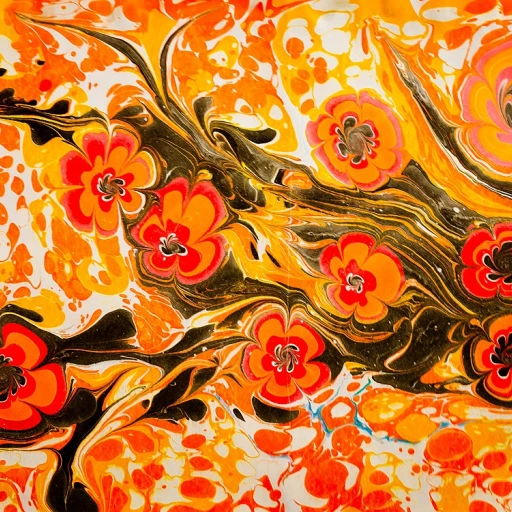-teaser.webp)
Understanding Frame Fillets
The Elegance of Frame Fillets in Picture Framing
In the realm of luxury artwork, the choice of framing can significantly enhance the visual appeal of a piece. Frame fillets, also known as filet, are slender strips of moulding placed between the picture frame and the mat or the artwork itself. Often crafted from fine wood, gold, silver, or black finishes, these delicate elements contribute to the overall aesthetics and sophistication of an artwork.
Frame fillets serve not just a decorative purpose but are essential in adding a layer of depth and richness to the piece. Whether opting for a gold fillet to accentuate warm tones, or a black fillet for modern elegance, the selection of a fillet frame can transform a standard picture frame into a statement of luxury.
Understanding the nuances of frame fillets can elevate the art viewing experience. These subtle additions vary in style—such as bead or flat profiles—and in composition, including options like acid-free fillet frames and veneer coatings. By carefully pairing them with suitable mat selections and frame mouldings, you ensure that the artwork commands attention while preserving its integrity.
The Craftsmanship Behind Frame Fillets
Meticulous Craft: The Fine Art of Creating Frame Fillets
The craftsmanship of frame fillets plays a pivotal role in elevating the visual appeal and structural integrity of luxury artwork. Frame fillets, often overlooked, are meticulously crafted elements that can transform an ordinary frame into a masterpiece of its own. But what truly goes into crafting these intricate pieces? In the world of custom framing, artisans dedicate themselves to mastering the intricate details of fillet profiles. Using an array of materials like wood, gold leaf, silver, and plain black veneer, these artists invest immense attention to detail. Gold fillets and moulding fillets stand out for their opulent gleam, while fillet blacks and frame liners offer a sleek, modern finish. The craftsmanship begins with selecting the right type of wood, understanding that the character and grain of a particular wood species can dramatically enhance or diminish the frame's aesthetic. Once the right material is chosen, it undergoes a precise moulding process to create the ideal lip, bead, and flat shapes that will complement the artwork seamlessly. Picture frames benefit significantly from this meticulous process, with each step ensuring that the final product enhances the beauty of the picture without overpowering it. Artisans often hand-finish these frame mouldings with fine details, such as the application of gold leaf or the careful crafting of fillet black or silver, to ensure the piece commands attention and admiration. Each crafted frame fillet is unique and tailored, as it aims to not only embrace the artwork but also withstand the wear and tear of time. The quality of craftsmanship directly influences the overall appeal and potential resale price of any luxury artwork. Those interested in delving deeper into such refined techniques can explore more about the allure of creating artwork on wood, which complements and enhances various framing strategies. Ultimately, it is this dedication to fine craftsmanship that ensures every frame fillet contributes positively to the visual harmony and longevity of cherished artwork.Choosing the Right Frame Fillet for Your Artwork
Selecting the Perfect Fillet to Complement Your Artwork
Choosing the right frame fillet is an art in itself; it requires a discerning eye and an understanding of how certain elements can harmonize with the overall aesthetic of your picture. As you delve into the world of frame fillets, it's important to take into consideration both aesthetic and practical aspects to ensure that your art is displayed at its finest.- Determine the Fillet Material: Options range from the timeless elegance of wood and gold leaf to the sleek sophistication of black or silver finishes. Each material offers a distinct texture and visual appeal that can either contrast or complement your artwork. If your piece contains bright colors or intricate patterns, consider a gold fillet to add a touch of luxury.
- Match to Frame Mouldings and Mat: It's vital to choose a fillet that pairs well with the existing frame moulding and mat. A frame moulding with a black fillet might lend a modern edge, while a silver veneer can illuminate monochromatic or cooler hues.
- Consider Artwork Style: The art style heavily influences the choice of a fillet. For instance, classic paintings may benefit from traditional gold fillets, whereas contemporary pictures might be best paired with a sleek flat bead or an acid free mat fillet.
- Pay Attention to Proportions and Profiles: The thickness of your frame mouldings and the lip of the fillet should strike a balance that neither overwhelms nor diminishes the artwork. Picture framing involves choosing the right fillet profiles that highlight your art without overshadowing it.
The Impact of Frame Fillets on Artwork Value
The Influence of Frame Fillets on Artwork Valuation
When it comes to luxury artwork, every detail matters, and frame fillets are no exception. These seemingly small components can significantly impact the perceived value of a piece. The choice of fillet, whether it's a gold fillet or a black fillet, can enhance the overall presentation and elevate the artwork's status.
Frame fillets, often crafted from fine materials like wood or adorned with gold leaf, add a layer of sophistication. The craftsmanship involved in creating these fillets, as discussed earlier, plays a crucial role in their appeal. A well-crafted fillet picture frame can transform a simple picture into a masterpiece, making it more attractive to collectors and art enthusiasts.
Moreover, the material and design of the fillet can influence the artwork's price. For instance, a gold fillet or a silver fillet can add a touch of opulence, while a black fillet might offer a modern, sleek look. The choice between a flat or bead profile can also affect the artwork's aesthetic and, consequently, its market value.
Custom framing options allow for the selection of acid-free mats and frame liners, ensuring the preservation of the artwork. This attention to detail not only protects the art but also enhances its appeal to potential buyers. The right combination of frame mouldings and fillet profiles can make a significant difference in how an artwork is perceived and valued.
In conclusion, frame fillets are more than just decorative elements; they are integral to the artwork's presentation and value. By carefully selecting the appropriate fillet, one can ensure that the artwork is not only protected but also appreciated for its true worth.
Trends in Frame Fillet Design
Emerging Styles in Frame Fillet Design
In the world of luxury artwork, frame fillets are not just functional; they are a statement of style and sophistication. As trends evolve, so do the designs and materials used in frame fillets, offering art collectors and enthusiasts a plethora of options to enhance their prized pieces.
One of the most notable trends is the use of gold leaf in fillet designs. This classic choice adds a touch of opulence and grandeur, making it a favorite among those who appreciate traditional elegance. Gold fillets can be paired with various frame mouldings to create a cohesive and luxurious look.
For a more contemporary feel, black fillets are gaining popularity. These offer a striking contrast against lighter frames and artwork, providing a modern edge that appeals to minimalist aesthetics. The sleekness of a black fillet can highlight the artwork's colors and details, making it a versatile choice for various art styles.
Another trend is the incorporation of natural wood veneers. These fillets bring a touch of organic warmth to the artwork, complementing both modern and rustic interiors. The grain and texture of wood fillets add depth and character, making them a popular choice for those who appreciate the beauty of natural materials.
In terms of design, custom framing options are becoming increasingly sought after. Art collectors are now more inclined to personalize their frame fillets, choosing unique profiles and finishes that reflect their individual taste. This trend towards customization allows for a more intimate connection between the artwork and its display.
Lastly, the use of acid-free materials in frame fillets is a growing trend, particularly among those who prioritize the preservation of their artwork. These materials prevent deterioration and ensure that the artwork remains in pristine condition over time.
As the art of framing continues to evolve, staying informed about these trends can help collectors make informed decisions that enhance both the aesthetic and value of their artwork.
Caring for Your Frame Fillets
Maintaining the Elegance of Your Frame Fillets
Caring for your frame fillets is essential to preserve the sophistication they add to your luxury artwork. Over time, even the finest materials, like gold leaf or high-quality wood, can become subject to wear and tear. Here’s how you can keep your frames and fillets in pristine condition:
- Avoid Direct Sunlight: While it might seem obvious, ensuring your artwork and frames are not in direct sunlight can prevent fading and warping of both the frame moulding and the fillet, especially when these are made from materials sensitive to UV light.
- Regular Dusting: Accumulation of dust can dull the appearance of a fine fillet or frame moulding. Use a gentle brush or a soft cloth to regularly remove dust, especially from intricate moulding fillet profiles.
- Control Humidity: Excessive moisture can lead to swelling or warping of wood and veneer materials. Keeping your home climate-controlled will help preserve the frame's integrity, maintaining its visual appeal.
- Clean with Care: If needed, lightly dampen a cloth with water or a non-abrasive cleaner suitable for fine art frames. Always test a small section first to ensure there’s no adverse reaction, particularly with materials like black or silver finishes.
- Use Acid-Free Backing: When considering longevity for your artwork and the surrounding frame fillet, using an acid-free mat and backing will help in preserving the fillet and art glaze, preventing chemical reactions that could cause discoloration.
- Professional Inspection: Periodically, consult a professional for inspection and maintenance. They can provide services like gold fillet touch-ups or adjustments to the frame liner, ensuring your artwork remains a lasting visual statement.
Proper maintenance of your picture framing elements not only upholds the aesthetic value but also contributes to the overall lasting appeal of your luxury artwork investment.














